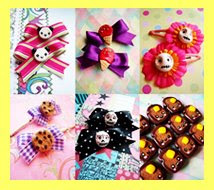
Sculpey III and Fimo Soft are the varieties I see for sale most often in the UK; Fimo Soft has largely supplanted Fimo ‘Classic’, probably because most people - kids especially - can’t be bothered with the extensive kneading the latter requires. However, the Soft kind is sometimes too soft, failing to hold delicate shapes or support the weight of a sculpture on legs. Sculpey III is if anything even softer, while in my experience Premo Sculpey is slightly firmer, but still a good deal less work than Fimo Classic. How firm you like your polymer clay has a lot to do with how hot your hands are, your patience, and the delicacy of the sculpture you are trying to achieve.
Much more significant than the differences between these mainstream brands is the leap from them to Super Sculpey or Super Sculpey Firm. These are far better at holding delicate shapes and fine detail, making them much more appropriate for some kinds of work. They do take a lot more kneading to make them pliable, but I find that only a minute or two of squashing and rolling gets them ready to use. Their big disadvantage is in the colours: Whereas the more common brands of polymer clay come in a dizzying range of attractive colours, standard Super Sculpey is always roughly the colour of northern-European skin, while the Firm variety is a sort of granite-grey. Obviously that’s great if you happen to want to make something in one of those colours, but otherwise you’ll be looking at a paint job at the end of it; of course some people are very happy painting their sculptures, but it’s not for everyone.
Achieving quite similar effects are Puppenfimo, also known as ‘miniature doll Fimo’, and Sculpey Living Doll. Aimed chiefly at the ‘art doll’ market, these are slightly softer than Super Sculpey, and the latter is available in several different fleshly colours. They retain a slight softness when cooked, and make for tough little sculptures which are slightly translucent, like human flesh.

Many other kinds of polymer clay are available - Creall-Therm, Cernit, Kato and Makin’s all have their own brands, about which I have heard good things, while Fimo and Sculpey have a range of other varieties which I haven’t touched on here. New products are devised on a regular basis - polymer science is very much a living field, and the polymer clay companies are spurred on to ingenious new applications by current high levels of interest in polymer clay as an artistic medium.










No comments:
Post a Comment